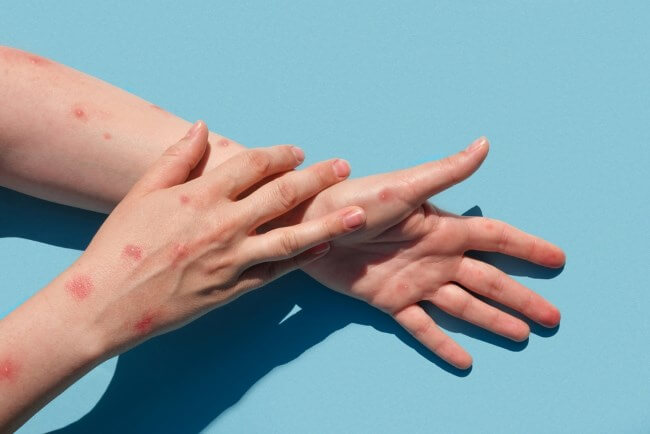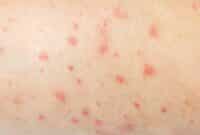LifeSurance.info – At first glance, the shape of monkeypox looks similar to chickenpox. However, there are some characteristics that distinguish monkeypox from other skin diseases. In order for monkeypox to be handled properly, it is important to recognize its correct characteristics.
Symptoms of monkeypox can appear about 1–3 weeks after a person is infected with the monkeypox or mpox virus. This infection usually begins with fever or lightheadedness, headache, muscle pain, or lumps in the neck and armpits. After 1–5 days of the initial symptoms occurring, a skin rash will appear. The form of monkeypox needs to be known so that it is not recognized as another disease rash.
Get to Know the Typical Forms of Monkeypox
The monkeypox form generally goes through 4 phases that develop gradually over 2–4 weeks, namely flat spots, raised spots, blistered spots, and scabs. In order not to be confused with other skin diseases, here is an explanation of the form of mpox that needs to be understood:
1. Flat spots
The initial form of monkeypox is in the form of ordinary flat spots like acne. These spots will eventually become reddish on the skin. In some people, reddish spots on the skin can feel very itchy and painful. Meanwhile, some other people can just experience itching without pain.
2. Spots appear in sensitive areas
One of the distinctive features of the form of monkeypox that distinguishes it from chickenpox is that mpox spots usually appear in sensitive areas, for example near the vagina or penis, anus, and groin. In this condition, monkeypox sufferers usually experience pain, swelling, and difficulty urinating.
In addition to appearing in the genital area, monkeypox spots also extend to the face, eyes, palms, soles of feet, mouth, and throat areas. These spots can appear in large numbers to thousands and spread, but they can also appear in certain areas and are not many, for example only 1–10 spots.
3. Raised spots filled with clear liquid
After a few days, the flat spots gradually turn into embossed nodules that are reddish in color and filled with a clear liquid. The form of monkeypox in this phase looks very similar to chickenpox.
4. Blistering nodules filled with pus
The nodules filled with clear liquid then enlarged, blistered, and purulent. These blisters usually last for a long time until they eventually dry out and crust. At this stage, the blisters can feel painful and hot to the touch.
5. Black crusty nodules, scarred, cured
Eventually, the nodules will break, dry, harden, and cause scars in the form of blackish patches on the skin. When it has healed, the blackish spots of monkeypox will fall off on their own and be replaced with a new layer of skin.
It should be noted that monkeypox sufferers can still transmit the virus to others until all the wounds are gone and a new layer of skin is formed. The monkeypox form usually takes 2–4 weeks to completely heal. Therefore, sufferers must limit contact with other people to prevent transmission.
The spread of the virus infection that causes monkeypox is still rare. However, this does not mean that this disease is underestimated or underestimated. The reason is, it is not uncommon for monkeypox to be mistaken for other skin diseases, such as chickenpox, measles, herpes, or syphilis.
Although it rarely causes complications, monkeypox that is treated improperly can increase the risk of bacterial infections in the skin (abscesses) and more serious skin damage. The disease can also cause inflammation of the foreskin or head of the penis, pneumonia, sepsis, inflammation of the brain, or urinary tract infections.
Children, pregnant women, and people with weakened immune systems, such as people with HIV, are usually more susceptible to monkeypox complications. Therefore, it is important to recognize the form of monkeypox and be aware of the spread of the virus that causes it.
If you experience symptoms of monkeypox and a rash similar to a form of monkeypox, the first step that can be taken is to consult a doctor. Consultations can be done from home without the need to be face-to-face through Chat with Doctors.
Later, the doctor will direct the next action to overcome monkeypox while preventing the transmission of the virus to others. Through this consultation, your doctor may prescribe topical medications or pain relievers to relieve symptoms and monitor your condition until you heal.

